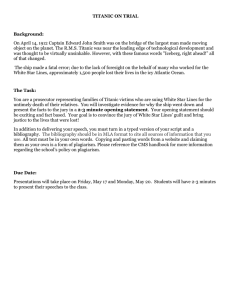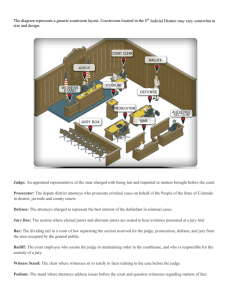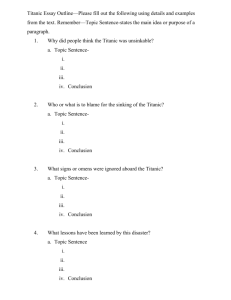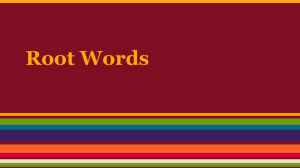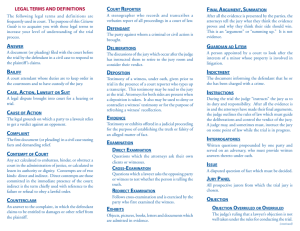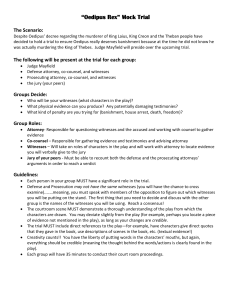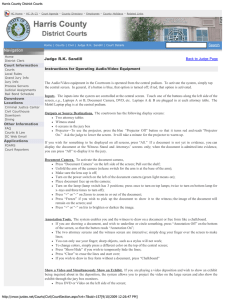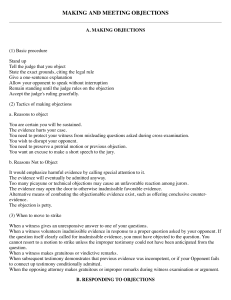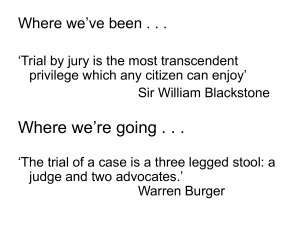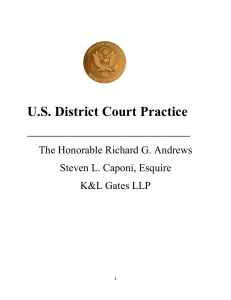TITANIC ON TRIAL YOUR TASK On April 14, 1912 Captain Edward
advertisement
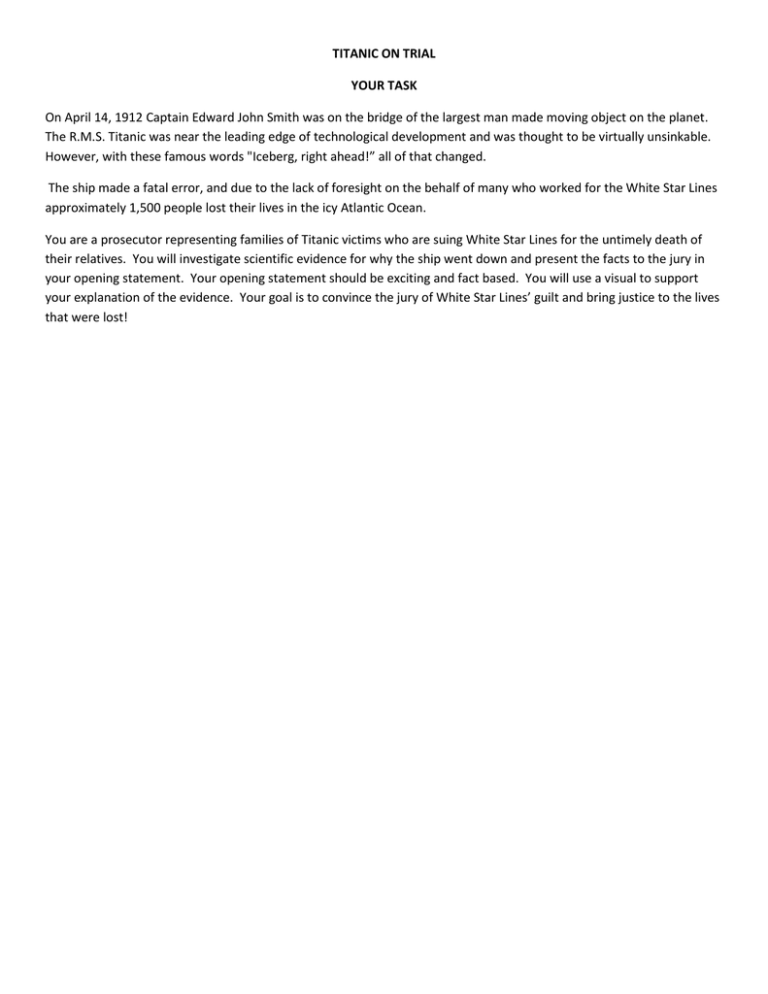
TITANIC ON TRIAL YOUR TASK On April 14, 1912 Captain Edward John Smith was on the bridge of the largest man made moving object on the planet. The R.M.S. Titanic was near the leading edge of technological development and was thought to be virtually unsinkable. However, with these famous words "Iceberg, right ahead!” all of that changed. The ship made a fatal error, and due to the lack of foresight on the behalf of many who worked for the White Star Lines approximately 1,500 people lost their lives in the icy Atlantic Ocean. You are a prosecutor representing families of Titanic victims who are suing White Star Lines for the untimely death of their relatives. You will investigate scientific evidence for why the ship went down and present the facts to the jury in your opening statement. Your opening statement should be exciting and fact based. You will use a visual to support your explanation of the evidence. Your goal is to convince the jury of White Star Lines’ guilt and bring justice to the lives that were lost! THE OPENING STATEMENT: ELEMENTS, STYLE & STRUCTURE Effective opening statements should: Be clear, simple and tell a story. Begin with an attention grabber a simple device (slogan, phrase, idea) that is easy to remember & will stick in the listener’s mind and immediately engages the listener. Include a brief summary of your case. Outline the case & provide a framework for the judge/jury to analyze the case. State the facts of the case that you expect to prove (focus on people & elements) Be well-organized & follow chronological order or another orderly sequence of events. Formalities/phrasing tips: “The evidence will indicate…” “The facts will show …” “Witnesses will present evidence to show that …” “Witness A will be brought to testify on the state’s/plaintiff’s behalf that …” “Today you will hear from Witness A who will tell you…” “When Witness B takes the stand, he will testify that…” STRUCTURE OF OPENING STATEMENT Introduction (possible suggestions) Begin with a formal address to the judge: “May it please the court, your honor, my name is ______, counsel for the _______ in this action.” Attention grabber. Example: “Your honor, this is a case of mistaken identity. Tragically, that simple, honest mistake could cost Mary Watson, my client, her precious freedom and future.” We’re here today because (one-sentence summary of your case) Tell a story – from your perspective that introduces and explains the evidence in the case: Describe your side of story vividly citing specific details so the judge can visualize what happened. Emphasize good evidence for your side. Tell the judge what to expect to hear from your witnesses and what the evidence will show. Conclusion: Rephrase and repeat your theme. Possible summary statement- “I am confident that after you’ve heard all of the evidence, you will come to the only verdict that the evidence supports and justice demands … At the end of this trial, I would ask you to find the defendant (liable/not liable) or (guilty/not guilty) for ____ VISUALS All drawings should support and give impact to your opening statement. Drawings should be clear, colorful and easy to understand. Written labels can be included to draw attention to certain parts of your picture. Written descriptions should NOT be included, as the jurors should be listening to your oral description of the facts.
